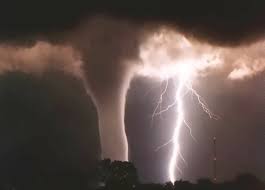 TORNADO SAFETY TIPS
TORNADO SAFETY TIPS
Central Alberta has recently experienced severe thunder storms producing large hail, funnel clouds and a tornado touched down just outside of the Calgary city limits. This alert has been developed to communicate information on warning signs and procedures in the event that severe weather develops.
Tornadoes are violent by nature. They are capable of completely destroying well-made structures, uprooting trees and hurling objects through the air like deadly missiles. A tornado is a violently rotating column of air extending from the base of a thunderstorm down to the ground.
Know the difference:
Tornado Watch – Tornadoes are possible in and near the watch area. Review and discuss your emergency plans, and check supplies and your safe room. Be ready to act quickly if a warning is issued or you suspect a tornado is approaching. Acting early helps to save lives!
Tornado Warning – A tornado has been sighted or indicated by weather radar. Tornado warnings indicate imminent danger to life and property. If possible, go immediately under ground to a basement or an interior room (closet, hallway or bathroom).
Watch for tornado warning signs:
- Dark, often greenish clouds – a phenomenon caused by hail
- Large hail
- Wall cloud – an isolated lowering of the base of a thunderstorm
- Roaring noise
- Funnel cloud – a visible rotating extension of the cloud base
- Cloud of debris
Get to the safest place:
- The safest place to be is an underground shelter, basement or safe room.
- If no underground shelter or safe room is available, a small, windowless interior room or hallway on the lowest level of a sturdy building is the safest alternative.
- If you are caught outdoors and cannot quickly walk to a shelter:
- Immediately get into a vehicle, buckle your seat belt and try to drive to the closest sturdy shelter.
- If flying debris occurs while you are driving, pull over and park. Now you have the following options as a last resort:
- Stay in the car with the seat belt on. Put your head down below the windows, covering with your hands and a blanket if possible.
If you can safely get noticeably lower than the level of the roadway, exit your car and lie in that area, covering your head with your hands
